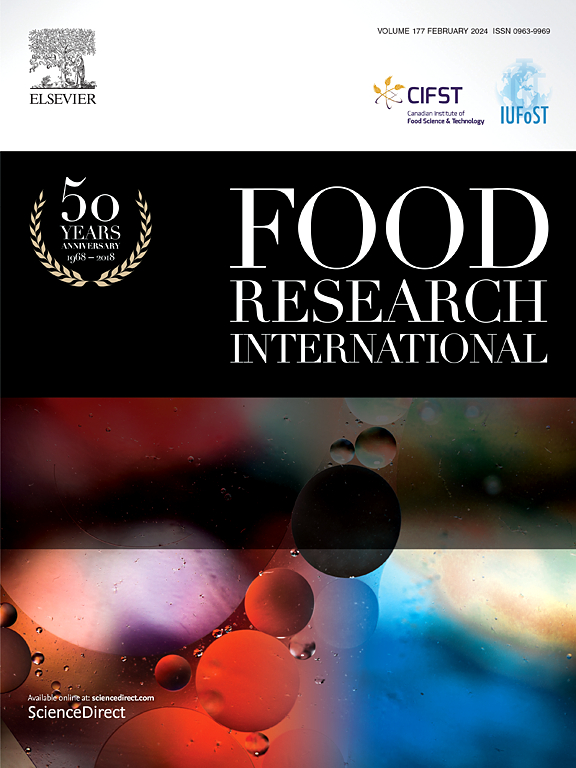Discovery and mechanism of novel anticoagulant peptides from Larimichthys crocea based on in silico, molecular docking, molecular dynamics, and in vitro analysis
IF 7
1区 农林科学
Q1 FOOD SCIENCE & TECHNOLOGY
引用次数: 0
Abstract
Fish is rich in protein and is an ideal raw material for the preparation of bioactive peptides. This study effectively identified 21 bioactive peptides from Larimichthys crocea protein using a combination of bioinformatics and in vitro evaluation. Molecular docking and molecular dynamics simulations (MD) showed that six of the peptides could strongly bind to the active center of thrombin through hydrogen bonding and hydrophobic interactions (binding energies are −7.2 to −8.5 kcal/mol), thereby displaying significant anticoagulant potential. These peptides were further demonstrated to have significant anticoagulant activity in vitro experiments with half-maximal inhibitory concentration (IC50) ranging from 0.47 ± 0.14 to 9.33 ± 0.12 mM. The activity may be closely related to the β-sheet and random coil conformations they contains. Furthermore, molecular docking with coagulation factors also revealed that these peptides might precisely regulate the intrinsic coagulation pathway by prolonging the activated partial thromboplastin time (APTT) by 2–3 times (p < 0.05) through blocking Factor IXa (FIXa) activity. This work provides new strategies for the anticoagulant evaluation and inhibitory mechanism of food-derived bioactive peptides.

基于硅、分子对接、分子动力学和体外分析的罗非鱼新型抗凝肽的发现及其机制
鱼类富含蛋白质,是制备生物活性肽的理想原料。本研究采用生物信息学和体外鉴定相结合的方法,有效地鉴定出了21个从胭脂鱼蛋白中提取的生物活性肽。分子对接和分子动力学模拟(MD)表明,其中6个多肽可以通过氢键和疏水相互作用与凝血酶活性中心强结合(结合能为−7.2 ~−8.5 kcal/mol),显示出明显的抗凝潜力。体外实验进一步证明,这些肽具有显著的抗凝血活性,半最大抑制浓度(IC50)在0.47±0.14 ~ 9.33±0.12 mM之间,其活性可能与其所含的β-sheet和随机线圈构象密切相关。此外,与凝血因子的分子对接也揭示了这些肽可能通过延长活化的部分凝血活素时间(APTT) 2-3倍来精确调节内在凝血途径(p <;0.05)通过阻断因子IXa (FIXa)活性。本研究为食源性生物活性肽的抗凝血评价和抑制机制提供了新的思路。
本文章由计算机程序翻译,如有差异,请以英文原文为准。
求助全文
约1分钟内获得全文
求助全文
来源期刊

Food Research International
工程技术-食品科技
CiteScore
12.50
自引率
7.40%
发文量
1183
审稿时长
79 days
期刊介绍:
Food Research International serves as a rapid dissemination platform for significant and impactful research in food science, technology, engineering, and nutrition. The journal focuses on publishing novel, high-quality, and high-impact review papers, original research papers, and letters to the editors across various disciplines in the science and technology of food. Additionally, it follows a policy of publishing special issues on topical and emergent subjects in food research or related areas. Selected, peer-reviewed papers from scientific meetings, workshops, and conferences on the science, technology, and engineering of foods are also featured in special issues.
 求助内容:
求助内容: 应助结果提醒方式:
应助结果提醒方式:


